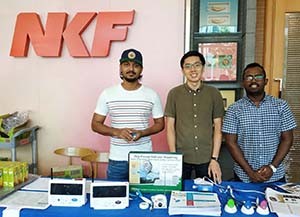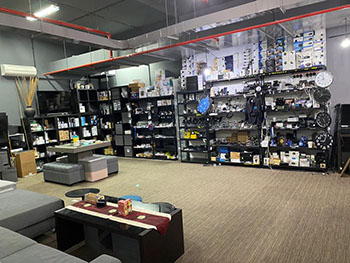The Rise of Body-Worn Camera Technology

One of the major things known to technology is its growth and evolution. It began as nothing but just a simple piece of tech, but over time grows in new age adding more feature and getting more convenient and more mobile-friendly. Computers at a time were once room-filling and so large. Now a computer can be so small it could fit into the palm, the same is seen for cameras. Cameras are getting better in specification detail and being frequently improved, this has enabled researchers and creator to even make more types of cameras that defy the logic of the past. There is a growing demand to meet the security need of the people
There are often those early morning meetings where the chief talks to the other officers, it’s usually about the safe practice and getting to record any criminal encounter to help with investigations and complication. But also times occur when these recordings are requested during times of investigation and all that is reported is that: “Sir the event happened so fast that there was barely enough time to put on the camera” this has led to many fallouts in police force around, the inability to produce video evidence always gets things very complicated. Officer-citizen cases were always very rampant and the only way to deal was to have evidences that it didn’t happen as was told.
Instances of being unable to record an occurrence had slowly become a major setback in the advanced police force, where the use of body-worn cameras is predominant. The officer really can’t be blamed, it’s difficult to be in a dire situation and the first thing on your mind is recording so you can point out evidence later. Once the police force is unable to provide video evidence that is in their policy, the public trust is lost and it gets very difficult to handle the case. Sometimes, there might even be a need for discipline when an officer did an exemplary job or curtailing a very dangerous situation that might have escalated. These are cases that are not justifiable, an officer who did his job well but couldn’t provide video evidence gets punished. No one enjoys being punished especially when they did well. Even the police chief can suffer politically when situations like these occur under his jurisdiction, it could lead to demotion or queries.
We are in a new age, the first generation of the body-worn cameras can’t be compared to the latest generation cameras. We used to have that archaic need to manually press a button to begin recording, as explained earlier this caused a major lot of problems. There was also that setback that involved having to use dock stations to offload recordings from cameras. This could all be very demanding and uncomfortable. Since the old-time, law enforcement technology has been seen to evolve in a major way, intelligence has now become more common. In the new age, smart technology is the talk of the town, automation is being invoked in every piece of tech. To turn on a body-worn camera, the smart automation technology does this. This has made policy-based recording way more accurate and less unreliable.
The new-age standard for policy-driven automated recording
The police force has moved to use the new age automated body-worn cameras that are triggered to record on their own, automatic recording has been embraced obviously to check the setbacks that the older generation that required triggering caused. By placing these automated devices on the officers out on duty, they can now perform their role more efficiently. The software-driven body cameras have been well programmed to start and stop all in accordance with agencies’ particular recording policies. Through over the air(OTA) updates that can be sent and downloaded by cameras on the field. Policy-based recording hence have become inconsistent compliance with the ever-evolving agency policies. In other words, changes that are made can be adjusted easily by simply updating your camera.
The installation of automated vehicle sensors has made it possible to make configurable decisions, which helps the automation record trigger when particular actions are done to the vehicle. For example, the recording could begin when the emergency light of the patrol vehicle is turned on and the door is opened. This is a simple automation technology that is very efficient. Some other vehicle sensors trigger camera recording is:
- Rifle and shotgun lock
- Vehicle speed
- Crash sensors
This is sensors that automatically trigger recordings. There is also technology that activates during the foot pursuit, with the advancement in accelerometer technology. New age cameras can determine if an officer is running or is walking, this would automatically trigger the camera recording. Alert that can trigger self when one officer is down; this works in a smart way, in the event that one officer is in trouble and would require backup. The system starts an automatic recording and calls back two minutes of the video and audio, this is used to alert and call the attention of nearby officers. The system does more than just alert nearby officers since they now have GPS embedded in them. The location of the down officer is also sent alongside the distress alert. This allows a quicker response and a better approach to such situations.
Automation the game changer
One of the most advanced technologies that have been around is the Computer-Aided Dispatch (CAD) calls, this permits even more automatically based policy. It automatically records when an officer receives a call for service. Action zone hence turns the camera on once the officer reaches the assigned location, this location could include an area with a shooter. This action zone could be initiated by the CAD or can be set manually.
In conclusion, as policy-based recording continues to be a standard, the law enforcement agencies benefit from the compliance with policy as human error and implicit bias are removed. The automatic recording makes video required available especially at crucial moments. This advance technology overall increases public trust, transparency, and accountability in the community were service is being rendered.








